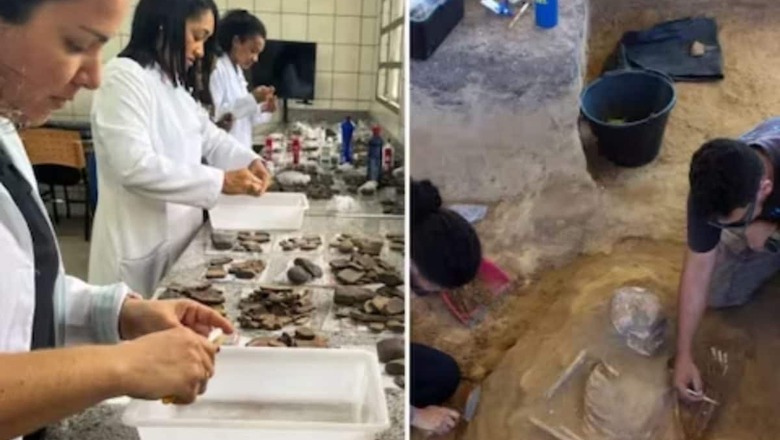
views
In a groundbreaking archaeological discovery, Brazil’s National Historical and Artistic Heritage Institute recently revealed the unearthing of ancient remains in the coastal city of Sao Luis. The excavation, initiated in 2019 near a construction site, has yielded an astonishing collection of over 1 lakh artefacts, along with the discovery of 43 skeletons, sparking excitement among researchers.
The remains found in Sao Luis have been dated back to an astounding 6,000 to 9,000 years, according to a thorough examination. This revelation is poised to reshape the historical narrative of human settlement in Brazil, offering evidence of a rich and ancient past on São Luis Island that predates conventional historical records in the region.
The National Historical and Artistic Heritage Institute shared this remarkable discovery on its website, emphasising the site’s significance as a remnant of the long history of human occupation on São Luis Island. The institute expressed its belief that this archaeological find, which continues to be explored, holds the potential for an abundance of hidden treasures, including valuable artefacts such as ceramic and precious metal utensils.
Chief archaeologist Wellington Ledge, leading the extensive excavation effort, stated, “We have been working continuously for 4 years. We have excavated even its difficult surface.” The ongoing excavation fuels anticipation among researchers, who are optimistic about unearthing additional treasures as the process continues.
The institute disclosed that the artefacts and skeletons discovered at this ancient site were first identified during construction work in 2019, prompting the commencement of the excavation. The artefacts are expected to provide valuable insights into the early human history of the region, shedding light on cultural practices, technologies, and lifestyles that existed thousands of years ago.
As researchers delve deeper into this archaeological marvel, they plan to employ a more precise dating technique known as isotopic analysis. This process involves converting artefact pieces into gas to discern their composition, enabling researchers to confirm and refine their theories regarding the age and nature of the discoveries. The potential for uncovering further treasures on São Luis Island has sparked both national and international interest, as the site promises to rewrite the history books on human settlement in Brazil.




















Comments
0 comment